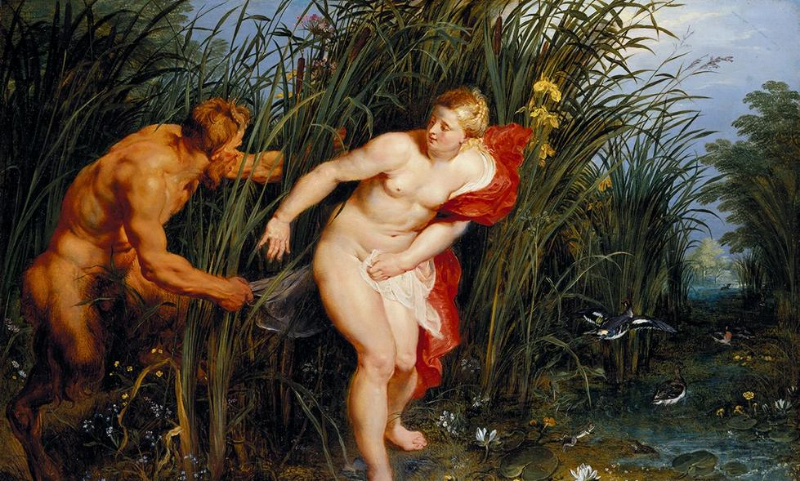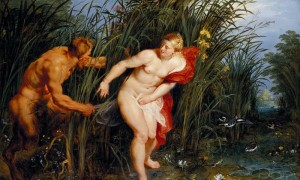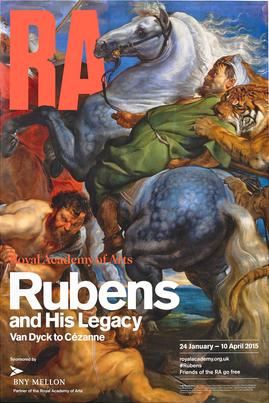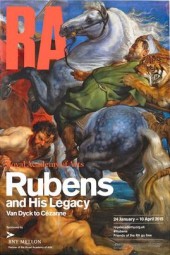Rubens and His Legacy: Van Dyck to Cézanne at the Royal Academy

The first major exhibition in the UK to examine Rubens’ influence on art history, Rubens and His Legacy: Van Dyck to Cézanne aims to place the great painter in the context of contemporary art.
The exhibition is separated by six themes: poetry, elegance, power, compassion, violence and lust. Each inspired by different aspects of Rubens’ work, they link his paintings to those of subsequent generations of great artists. For instance, in Poetry, Rubens’ incredible sense of atmosphere and the narrative moving through his landscapes can be found in Constable’s Cottage at East Bergholt (c 1833) and Gainsborough’s The Harvest Wagon (c 1784). Then, there is Rubens’ The Garden of Love (c 1633), where five out of the six women depicted represent his second wife, Helen, from different angles.
One of the ideas behind the exhibition is to show that Rubens is a lot more than the painter behind the “Rubenesque” women. He was a master of every genre in painting, his versatility only comparable to his productivity. Elegance presents his masterful depiction of life-size family portraits, while Compassion showcases him as a religious painter. Violence is an example of his ambiguous compositions, where women are represented either as victims of brutalities or as overpowered by passion. Through his work, Rubens resurrected the genre of hunting painting as the impact of his The Tiger Hunt (1616) is obvious in Delacroix’s The Lion Hunt (1858). Here is also the incredible cycle of empathy Tiger, Lion and Leopard Hunt (1616) – Rubens’ ode to da Vinci.
Rubens made a great propagandist, too, as showcased in Power. Manipulating traditional symbols and allegories, Rubens creates a mix of mythology and actuality in such a seamless manner that he makes Marie de Médicis look divine and flawless.
In Lust, Rubens’ Venus Frigida (1614) is displayed together with Cézanne’s Three Bathers (1875), Van Dyck’s Jupiter and Antiope (1620), and Picasso’s Faun Uncovering a Sleeping Woman (1936). Rubens’ warm compositions can also be found in Renoir’s soft, warmly coloured paintings.
Lastly, La Peregrina is a room curated by Jenny Saville, displaying work from the 20th and 21st centuries. Here, Kooning, Picasso, Bacon, Freud and Warhol, showcase how Rubens’ impact is so great it “runs through the pathways of paintings”, completely changing art forever.
The best exhibition in London right now, Rubens and His Legacy is a study of a masterful painter whose fast-moving brush work and exquisite detail continues to influence artists to this day.
Lyubomira Kirilova
Rubens and His Legacy: Van Dyck to Cézanne is at the Royal Academy of Arts, sponsored by BNY Mellon, Partner of the Royal Academy of Arts, until 10th April 2015, for further information or to book visit here.



























Facebook
Twitter
Instagram
YouTube
RSS